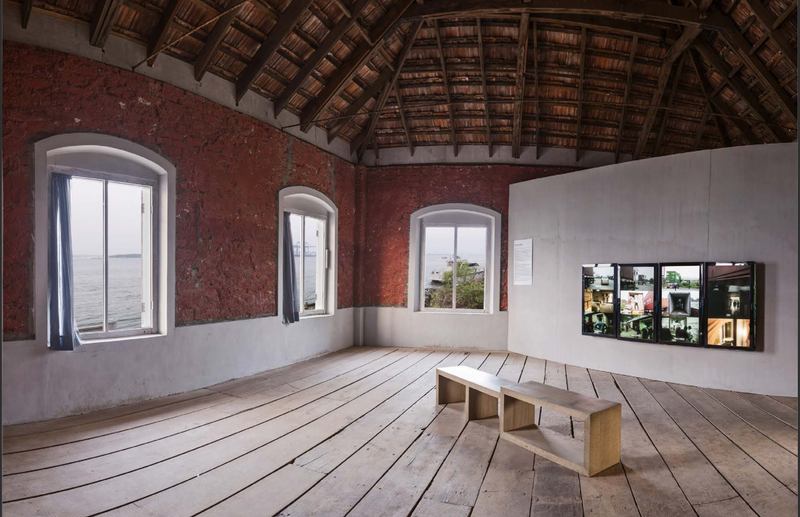
Destuffing Matrix
4 channel HDV, 8 minutes
First produced for the Kochi Muziris Biennale, 2012.

4 channel HDV, 8 minutes
First produced for the Kochi Muziris Biennale, 2012.
Metabolic Container
Starting from 400 boxes of goods, part of a weekly, diasporic "trade" (one-way) between Batam in Indonesia, and Singapore. In which the container and its boxes are not just a carrier, but a medium.
A film that compiles observations made by volunteer guards watching the English Channel, over one year. Filmed by small cameras connected to the eyepiece of telescopes.
Produced with the National Coastwatch Institution, Folkestone, Kent, UK.
60 minutes, 5.1 surround sound.
A journey with CAMP’s five-year Wharfage project and related maritime explorations.
20 mins, HD. 2 - channel installation
Cantonese, Mandarin
Filmed in Guangzhou at the Zhuhai International Container Terminal
13 December 2015 – 31 January 2016
Times Museum, Guangzhou
20 mins, HD. 2 - channel installation
Cantonese, Mandarin
Filmed in Guangzhou at the Zhuhai International Container Terminal
CAMP presents
Destuffing Matrix
2012
4 x 3 channel HDV, 8 minutes.
2nd floor, Pepper House, Fort Kochi
12/12/12 to 13/03/13Show extended till 17/03/13
At first, a project on the creek in Sharjah in 2008-2009, from where a large number of ships leave for Somali ports.
13m 14s looped, seven channel environment with alternating soundtracks
2022
Filmed by CCTV camera from a single-point location in South-Central Mumbai.
De Appel, Amsterdam
On three screens, a city-symphony filmed by automated CCTV cameras in Amsterdam. The optical and motor capacities of these cameras are pushed to an extreme. Certain human subjects reappear near or far in the images, suggesting a form of reciprocal knowledge or intent, a secret pact between cameras and people.
A 100-foot long sequence of photo-cutouts, first shown at the Chennai Photo Biennale, March 2019
MATRIX
Of mother, womb, array, environment in which more specialised structures can grow.
Theater Münster
Neubrückenstraße 63
10 Jun - 1 Oct, 2017
Site-specific installation with Electric cable, switches, speakers, monitors, custom electronics.
Single exposure solar cyanotype print on cotton fabric
CAMP with Shunya collective and Clark House Initiative
22 x 5 feet
An image of the sea as its own “country”, with frontier towns at its edges disorients an easy reading of this territory
A three-channel installation from 8mm film
From the Clark House family archives, sequenced in a timeline as above.
Each screen is a different part of the same 8mm frame, usually a face.
Feature-length film by sea between western India, eastern Africa and the Persian gulf. First shown at a purpose built outdoor cinema on the creekside in Sharjah in 2013, where many of the sailors gather. Shown in Documenta 13 in an abridged form, as part of the installation The Boat Modes.
83 mins.
Original format(s): HDV, SDV, VHS-C, Cellphone videos (variable formats). Stereo audio and in-cameraphone music.
A screenplay in Courier 12pt melodramatic format, spanning the first three days of lobbying for cabinet spots, in the wake of the Indian general elections of 2009. The dialogue is entirely from phone taps made by the government. The screenplay slows them down and asks: what kinds of environments and scenes may lie behind them, and how are they connected?
Printed screenplay and IVR-based phone line, audience can type in scene numbers to hear dialogue in the original voices. Also performed as a reading.
Act II (Hum Logos) is a 45-minute audio film spliced from the Pad.ma collection of the Radia Tapes. It covers two months after the Indian general elections of 2009, with the new cabinet in power. The film asks: if debate around these tapes was about whether they are edited or not, or as Justice Mukhopadhay put it, "splice has been added", then what can further editing do?